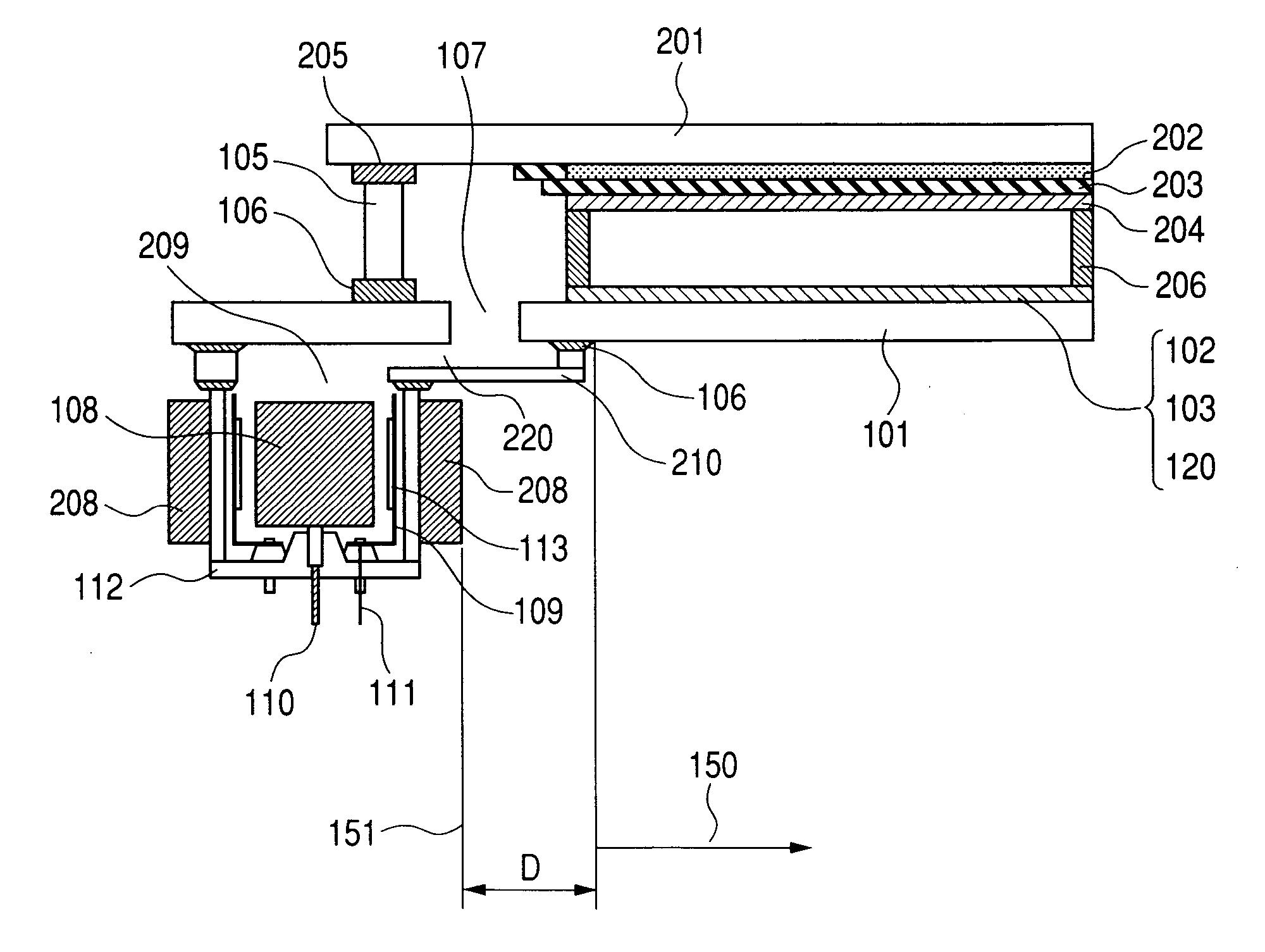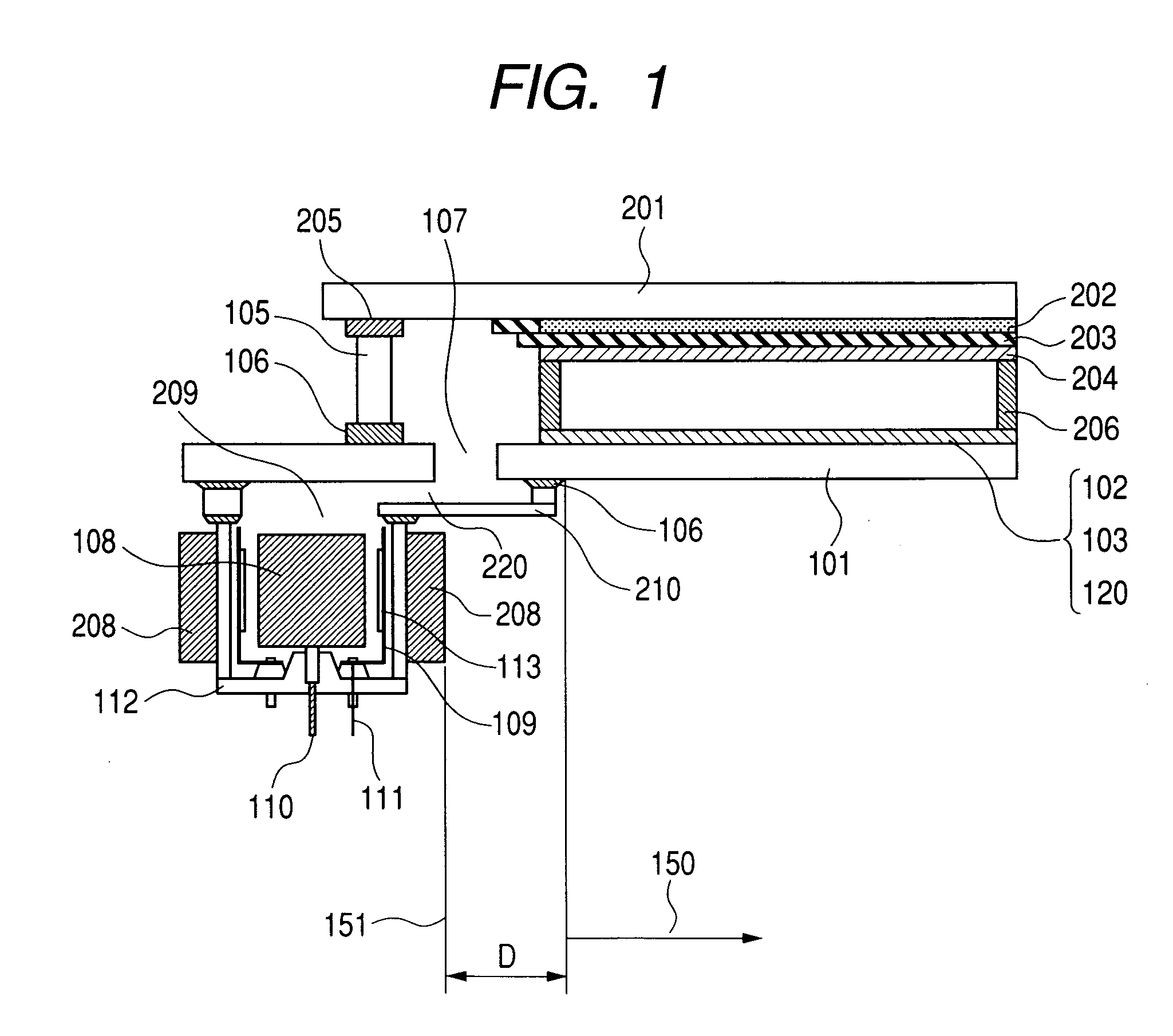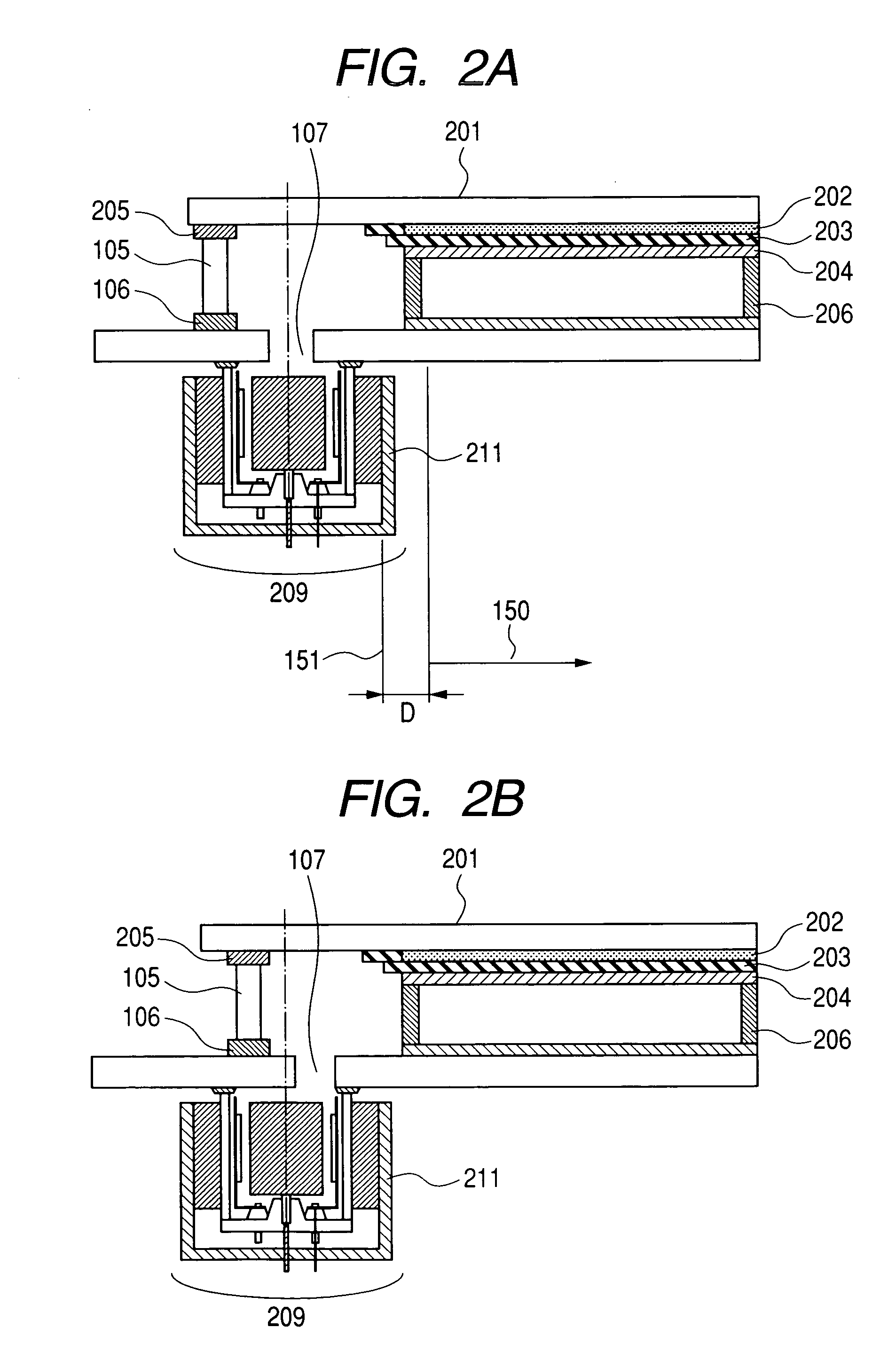Image display apparatus
a technology of image display and display tube, which is applied in the manufacture of electric discharge tube/lamp, tubes with screens, discharge tubes luminescnet screens, etc., can solve the problems of reducing the amount of electron emission, hindering the display of bright images, and adversely affecting the effect of electron sources
- Summary
- Abstract
- Description
- Claims
- Application Information
AI Technical Summary
Benefits of technology
Problems solved by technology
Method used
Image
Examples
embodiment 1
[0091] An image display apparatus having a magnet 208 of an ion pump 209 installed at a position apart from an electron-emitting device 120 (an electron source) and a phosphor film 202 to be exposed to electron beams will be explained with reference to FIG. 1, and a method of producing a vacuum chamber of the image display apparatus, with reference to FIGS. 2 to 7.
[0092] First of all, a method for producing a sealed vessel of an image display apparatus will be described. Soda glass (SL: product made by Nippon Sheet Glass Co., Ltd.) with a thickness of 2.8 mm and a size of 190×270 mm was used for a face plate 201, and the same soda glass with a thickness of 2.8 mm and a size of 240×320 mm was used for a rear plate 101. In the practically used rear plate 101, an outlet 107 with a diameter of 8 mm was opened at a position outside an image region and on the inside of a glass frame 105.
[0093] The film of element electrodes 402 and 403 in a surface conduction type electron-emitting devi...
embodiment 2
[0119] As is shown in FIG. 2A, an image display apparatus and an ion pump in the present embodiment were produced as in the case of Embodiment 1 except that an ion pump casing 112 was directly bonded to a rear plate 101 with frit glass 106.
[0120] A yoke 211 made of iron with a thickness of 2 mm was installed outside a magnet so that as many magnetic lines of force as possible could pass through the yoke. The magnet and the yoke were placed so as not to come right under an electron-emitting device 120 (an electron source). In the present embodiment, the magnet was arranged so that the end of the magnet could be separated from the nearest electron source by 10 mm. In order to separate the end of the magnet and the yoke from the electron source, a larger supporting frame 105 and a larger substrate for a face plate 201 than usual were used.
[0121] When a brightness distribution of the image display apparatus prepared in Embodiment 2 was measured, the brightness even around an ion pump ...
embodiment 3
[0124] As an ion pump is shown in FIG. 2B, the central axis of the ion pump was displaced from the central axis of an aperture portion 107 toward an opposite direction to an imaging region. By doing so, a supporting frame 105 and a substrate for a face plate 201 similar to Embodiment 1 could be used. Except the above points, an image display apparatus and the ion pump were produced as in the case of Embodiment 1. A yoke 211 made of iron with a thickness of 2 mm was installed outside a magnet so that as many magnetic lines of force as possible could pass through the yoke. The magnet and the yoke were placed so as not to come right under an electron-emitting device 120 (an electron source). In the present embodiment, the magnet was arranged so that the end of the magnet could be separated from the nearest electron source by 10 mm.
[0125] When a brightness distribution of the image display apparatus prepared in Embodiment 3 was measured, the brightness even around an ion pump was reduc...
PUM
 Login to View More
Login to View More Abstract
Description
Claims
Application Information
 Login to View More
Login to View More - R&D
- Intellectual Property
- Life Sciences
- Materials
- Tech Scout
- Unparalleled Data Quality
- Higher Quality Content
- 60% Fewer Hallucinations
Browse by: Latest US Patents, China's latest patents, Technical Efficacy Thesaurus, Application Domain, Technology Topic, Popular Technical Reports.
© 2025 PatSnap. All rights reserved.Legal|Privacy policy|Modern Slavery Act Transparency Statement|Sitemap|About US| Contact US: help@patsnap.com



